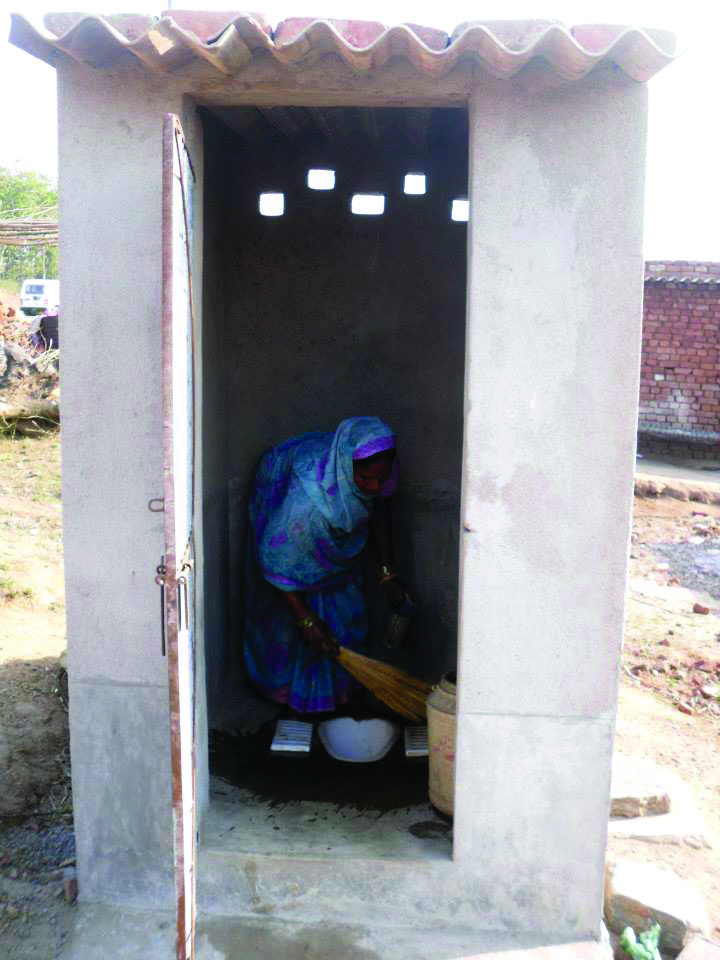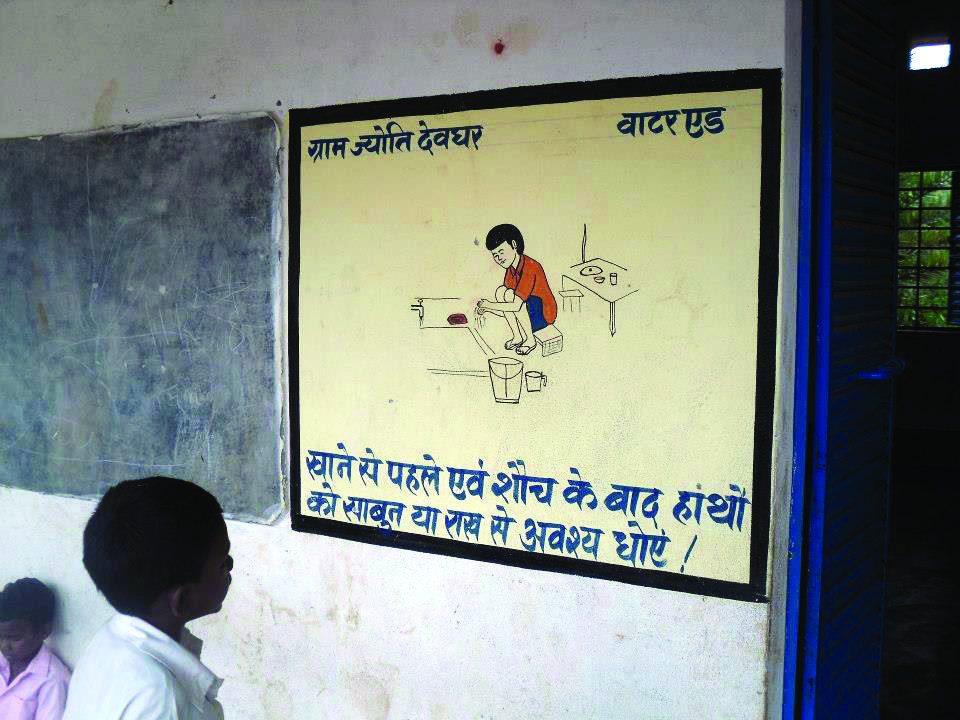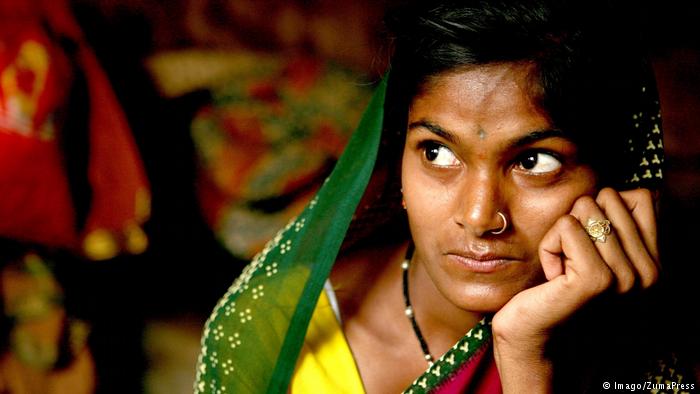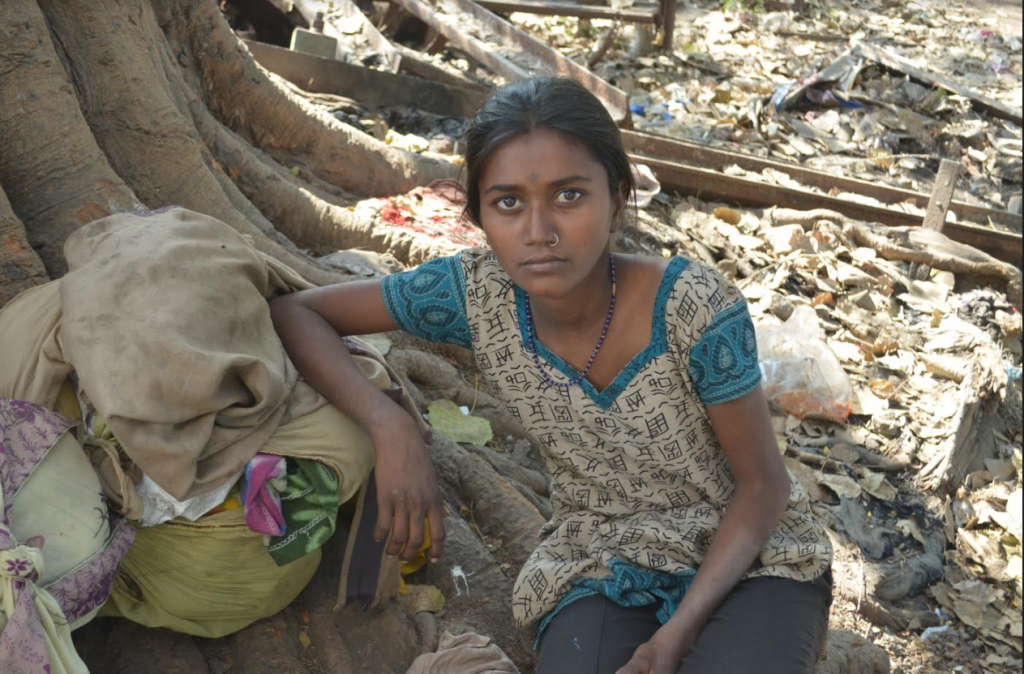Anita Devi will finally have her own toilet
Anita Devi, 50, of Dumri village in India’s eastern state Jharkhand, leaves her chores midway to rush to attend the meeting at the panchayat (village council) office. As she arrives, the officials announce that Dumri will soon be witnessing frantic construction activity as their proposal for building toilets in every home has come through. For Anita, who lives with her children and grandchildren, this is the best news she has heard in a long time.
Although she has been defecating in the open ever since she can remember, she absolutely detests it. She has not only braved the biting cold but has also had a run-in with elephants, scorpions, snakes and even a bear!
“Women in my village wake up at 4 am to relieve themselves in some open field or the forest nearby. There have been so many times when I have refrained from relieving myself during the day because I have to go far from home. The rains make it really difficult to step out and sometimes we even encounter wild animals,” she reveals. But if things go as planned, then this struggle will end soon.
A big challenge
Open defecation is a huge challenge in Jharkhand, says Job Zachariah, CFO, UNICEF- Jharkhand, which has joined hands with Action for Community Empowerment (ACE), a local non-government organization, to support the implementation of the Indian government’s sanitation programme: “Census 2011 has revealed that only 7.7 percent of households in rural Jharkhand have toilets, making it the state with the highest rate of open defecation in India. This has serious health repercussions especially for women and children.”

Proper sanitation facilities ensure a woman’s dignity, safety and well being. (Credit: Nirmal Bharat Abhiyan)
It’s been tough to bring about a behavioral change, which holds the key to long-term transformation. However, the new-and-improved sanitation scheme that adopts a community consensus approach has begun showing positive results.
According to Sudhir Prasad, Additional Chief Secretary, Drinking Water and Sanitation Department, Government of Jharkhand: “We learnt lessons from the previous Total Sanitation Campaign (TSC) and altered our programme in various ways to ensure sustainability. In order to make our rural areas Open Defecation Free (ODF), we are targeting entire villages as opposed to convincing individual households. This approach has given us considerable success. A major incentive that works is that ODF villages have been promised piped water supply.”
Gadri’s success story
Prasad is particularly proud of the work that has been done in Gadri village, which lies near Dumri. West of the state capital, Ranchi, the tribals of Gadri suffered from various health problems owing to pathetic sanitation in the area. But that changed in May last year. Reveals village head Sanika Oraon, who was one of the first in Gadri to get convinced of the need for toilets: “At the outset, the NGO conducted a survey in the village. They explained how, due to faecal contamination, we were suffering from diarrhoea, malaria, poor maternal health, anaemia and malnutrition. The problems used to get worse during the monsoon. Slowly, but surely, our attitudes underwent a change.”
For months Sanika Oraon, along with the rest of the 450 villagers discussed the pros and cons of the scheme before everyone agreed on constructing toilets. “We submitted a proposal and within two months the construction was complete,” she says with a smile. On May 13, 2013, Gadri became the first village (in the block?) to achieve the ODF status and it now serves as a model for the entire district. Taking lessons from Gadri, Hutar village, 45 kilometres from Ranchi, which falls under the Harihapur Jamtoli Panchayat, has recently achieved the ODF status. “By the end of November 2014, we will have two more ODF villages in the area,” adds Sanika.
Gadri’s Sugi Orain, who has survived a bear attack at the break of dawn, is a relieved woman today, Shivni Bhaktain, 55, from Hutar is proud of the fact that she has a toilet of her own. She says: “I’m happy that we don’t have to go to the jungle anymore for defecating,” she mumbles. Others, like Diwanti Orain, 36, feel that having a toilet at home saves women a lot of time: “We should have made toilets many years ago. Life would have been so much easier then.”
How it works
Under the leadership of the village head, the total cost of construction is calculated and, accordingly, the villagers contribute to supplement the amount, which becomes a part of a revolving fund made available by the district authorities through supporting institutions/agencies.
Sometimes when people don’t have money to contribute, everyone waits for them to harvest their crop to earn money otherwise the community pitches in. Once the toilets have been in use for three months and there is no report of open defecation, the Village Water and Sanitation Committee (VWSC) can claim the subsidy amount as provisioned under the scheme – Rupees 4,600 (around 90) per household multiplied by the number of eligible households.
Sanika Oraon, the village head, worked out the total cost of construction of toilets for every household in Gadri village to Rupees 490,000 ($8000) approximately. “Subsequently, the VWSC submitted a proposal to the District Water and Sanitation Mission (DWSC) for a loan of Rs 1,75,000 (around $2800) to initiate the project. ” Individual households contributed the rest of the money.
These days, community meetings to finalise the work are being held on a regular basis in Anita’s Dumri village. Sunita Orain, a community activist, has been working hard over the last few months to ensure that people are present in large numbers. “Community mobilisation is important. I live here and so I understand the difficulties people have endured due to the absence of toilets. It is a question of dignity,” she says.
Owing to the toilet revolution that is underway life has improved considerably for the tribal women of Bero. And as news of the success stories spreads more and more panchayats are coming on board.
Author: Dilnaz Boga
Editor: Manasi Gopalakrishnan
© Women’s Feature Service
This is a story from Womens Features Service.







